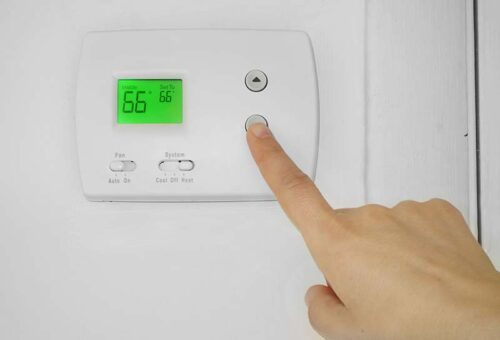As the winter quickly approaches, you’ll want to get your HVAC system primed and ready to go. With wintry blasts of snow, ice, hail, and more, winter proves to be one of the most dangerous seasons for your HVAC system. With these steps, here’s how you can go about winterizing your HVAC system.
Cleaning Outside Debris
A major part of winterizing your HVAC system begins with cleaning the outside debris. As fall comes to a close, you’ll probably notice tons of leaves, pine needles, and other muck surrounding your system.
On top of that, it’s possible that small animals like squirrels have made themselves at home inside the system. If that’s the case, you may want to consider spraying some pet repellent on the condenser itself. That way, the squirrels and other critters will know to keep away from your HVAC system.
Winter itself presents a new set of weather-related dangers for your system. When it comes to winterizing, you’ll quickly realize it is an ongoing process. Make sure there’s no snow piled on top of the unit, as this might create an insulating layer that prevents airflow within the heating/cooling ducts. This ultimately reduces efficiency. Also make sure there aren’t any ice dams forming behind the unit (e.g., water flowing down from your roof into gaps between shingles), which could lead to water damage in your home when melted by warm air blowing upwards through your vents.
Turn Your HVAC System On A Few Times
Another important step in the winterizing process: you’ll want to turn your HVAC system on a number of times before the winter truly hits. This is great as it’ll give you a feel for whether your system is in healthy working order or not.
To get started with this part of the winterizing process, you’ll want to jumpstart the system a few weeks before (or even a month-plus) the winter starts. This timetable usually provides a good measuring stick for where your HVAC system stands and what needs to get fixed. It also warms up your system for the dangerous weather conditions winter brings.
Change Your Air Filter
We here at Donnelly Mechanical always advocate for the changing of your air filter. When winterizing your HVAC system, this should be a priority. ASHRAE recommends that you should always replace your air filters based on the manufacturer’s recommendations. Usually, you’ll have to replace around the 3-month mark — roughly when the seasons change, so it all lines up!
Clean Your Air Vents
Winterizing your HVAC system also entails the cleaning of your air vents. This is crucial as, with the fall, animals and other critters can find their way into your system and make themselves at home. On top of that, other debris like leaves, pinecones, etc. can make their way in — which can ultimately throttle the performance of your system.
You’ll also want to check for standing water and leaks. Any pooled water in your HVAC system can be a breeding ground for Legionella — which can lead to an outbreak of Legionnaires’ disease, a dangerous respiratory infection.
Conduct a Thermostat Check

Lastly, you’ll want to ensure your thermostats are in working order. Does your HVAC system provide heat once the thermostat is turned on? Are there any spots in the building that don’t receive adequate heating and ventilation? Observing the in-house effects that your thermostat brings about can highlight any lasting issues with your HVAC system
Winterizing Your HVAC System with Donnelly Mechanical
Winterizing your HVAC system doesn’t have to be a labor-intensive effort. At Donnelly Mechanical, our trained professionals are more than happy to assist you with your winterizing needs. To get started on the process, please visit our website and get in touch with us today!